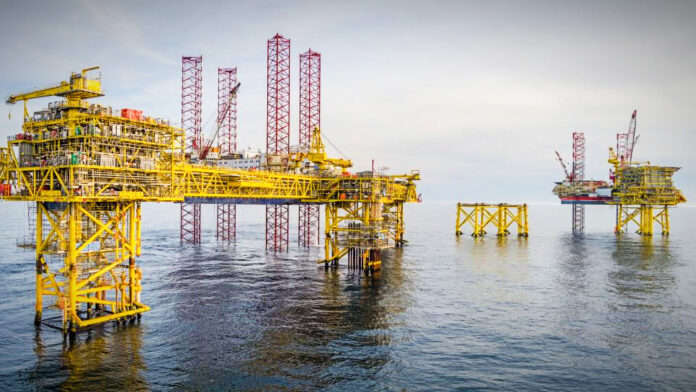Industrial automation vendor Rockwell Automation is working with French multinational energy company TotalEnergies to implement a robot fleet management system for its offshore oil and gas platforms. Rockwell Automation has been engaged via its professional services business Kalypso. The duo are to start testing unmanned operations at a single “offshore asset” in the middle of 2023.
The plan is, eventually, to rollout autonomous operations, including camera-equipped drones for maintenance and safety inspections, plus remote controlled automation systems, more widely across its oil and gas rigs. It said the same theory applies to automation of offshore wind farms, also. A statement said the new management system and scheduled robot tests “bring autonomous cooperation a step closer for oil and gas operators”.
Working conditions on offshore platforms has seen the oil and gas sector invest heavily in autonomous operations, in order to “enable unmanned operations for long periods”. The logic, clearly, is to streamline operations, reduce accidents safety, and, in theory, attract new talent “interested in new tech”. TotalEnergies said it has invested for five years in ground robots to handle manual tasks on offshore platforms; the new work is to enable their remote control.
Specifically, it is looking to implement a robot supervision system (RSS) with Kalypso to allow onshore operators to supervise and coordinate offshore robots using various IoT technologies. It has been investing in autonomous surveillance and inspection robots certified to the ATEX explosive atmospheres standard. The challenge, it said, has been to interface new robots with legacy systems, and to represent data from them in a “user-friendly interface”.
Which is where Kalypso joined the story, to diagnose the problem and draw on a library of industrial automation and IoT solutions, from Rockwell and from further afield. Notably, it is using a real-time gaming engine from Unity Technologies, used in many video games. A statement said: “In recent years, industry has adopted it to create interactive digital content from 3D data and deploy it to various platforms.”
The solution combines the functionality of a digital twin and the mobility and synchronization of a gaming platform, said Rockwell in a statement. It works as the backbone to the new RSS, to consolidate and render data from different robots in HMI displays “for remote operators to work efficiently and effectively”.
Matt Graves, director at Kalypso, said: “There is a strategic objective to minimize employee exposure on these platforms. Over the years, this has been achieved by improving the design and automating equipment. But there are still tasks that need to be performed manually, many of which involve observations by operators… The next step [is]… a control system to operate these robots remotely. For that, [TotalEnergies] turned to Kalypso.”
Grégoire Audouin, robotics system architect in the research team at TotalEnergies, said: “Tests are important at this stage… [to] understand all the operational aspects of using the robots for inspection purposes, anticipating further potential for maintenance and operation. The main benefit for the operators is to remotely control these robots and have an immersive view from a central control room. There is huge potential for innovation in our industry.”

